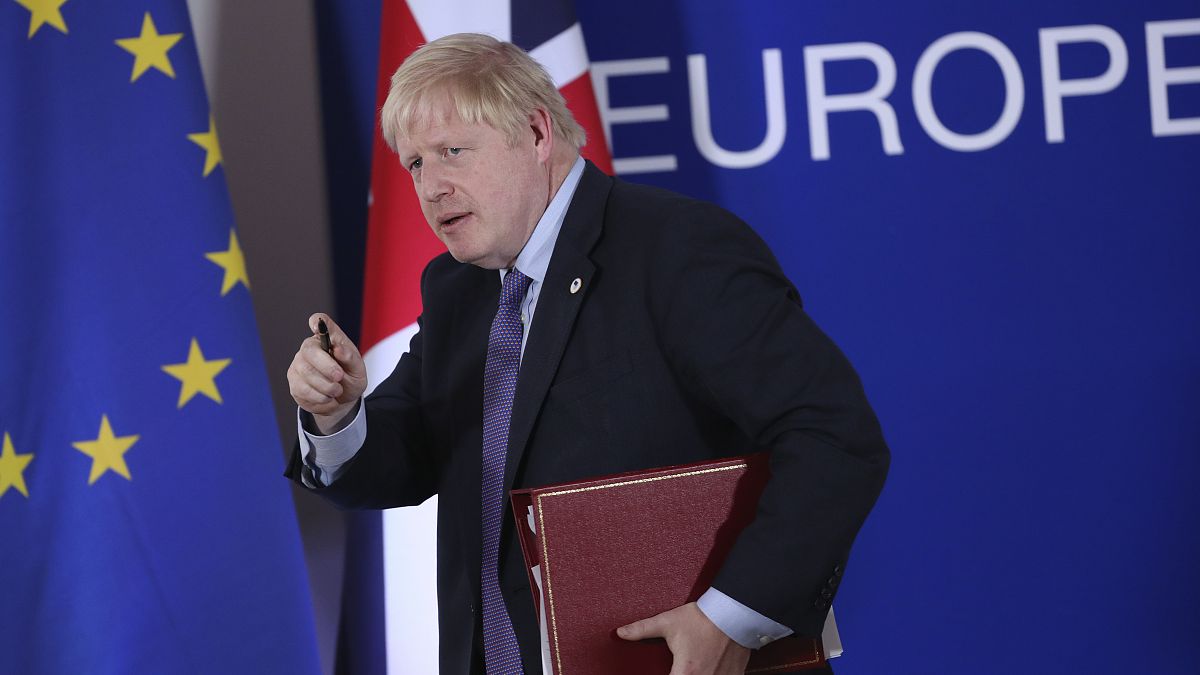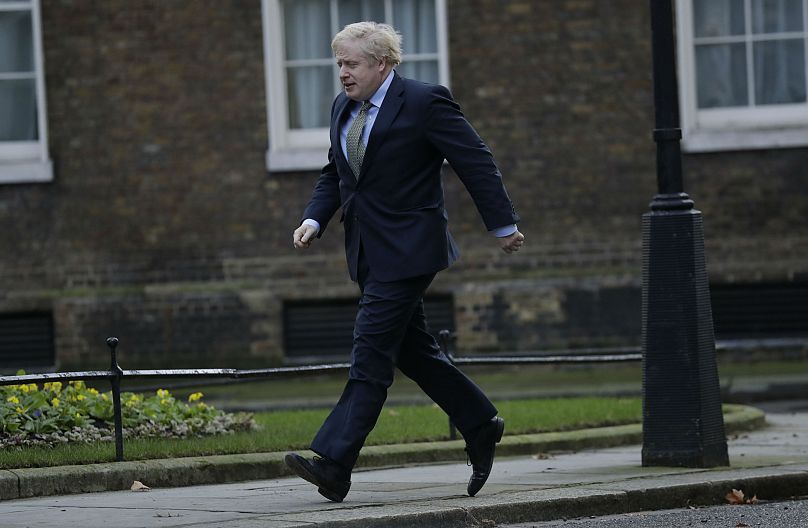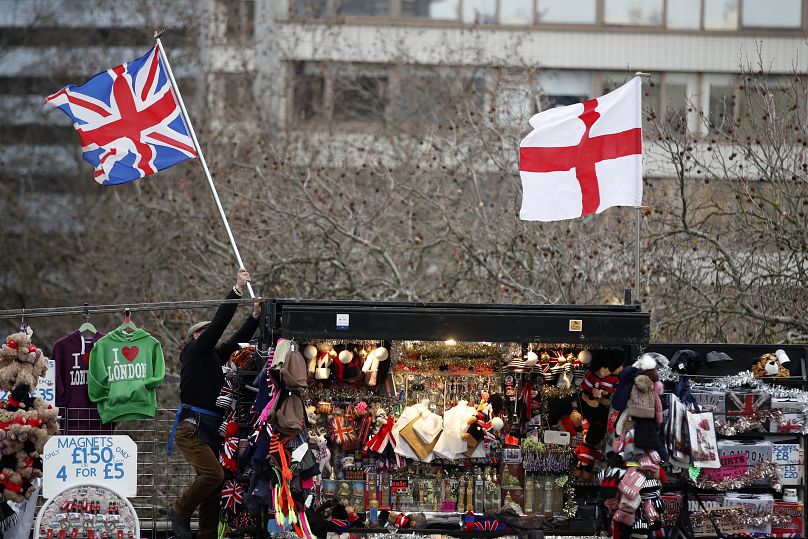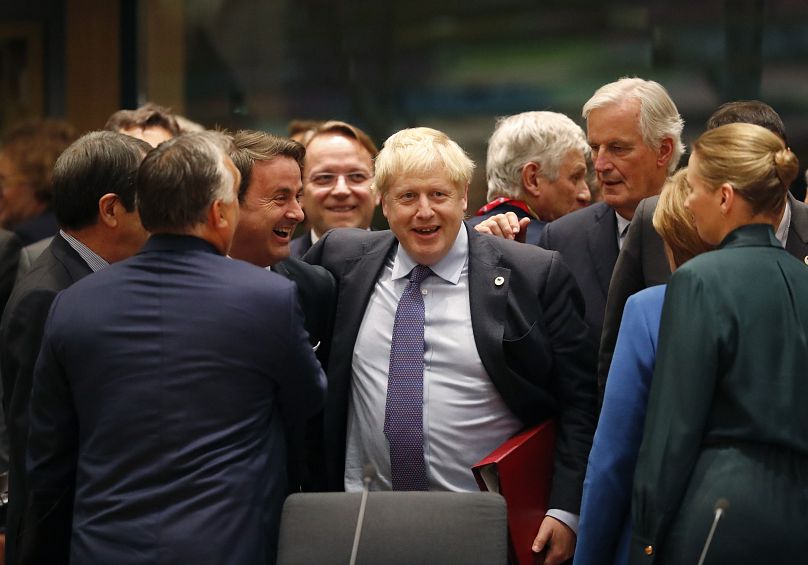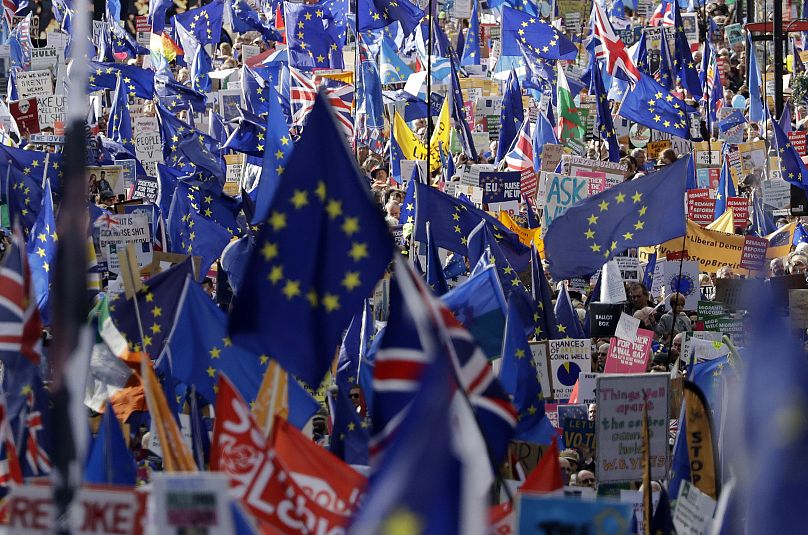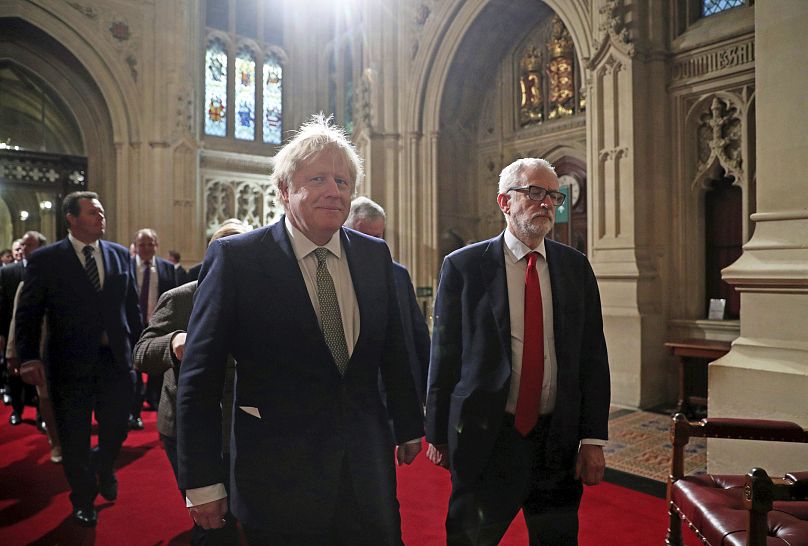Since July, Boris Johnson has transformed his party, won an election and ensured the UK will leave the EU. But his critics say Brexit is far from done.
Like him or loathe him, Boris Johnson has had a momentous impact since he became prime minister on July 24, 2019.
Six months on, the political paralysis over Brexit has been ended and the United Kingdom’s imminent departure from the European Union is now a near-certainty.
From the ashes of the Conservatives’ European election drubbing, the party has been transformed, the opposition defeated, and the prime minister looks likely to rule for at least five years - if not longer.
But critics counter that Johnson’s key message is misleading: Brexit will be anything but “done” on January 31. The UK’s future relationship with the EU still has to be determined, and time is tight.
The transition period - during which the UK retains its relationship with the EU as before Brexit - only lasts until 31 December this year.
Here we look back at the key events in the six months since Johnson entered Downing Street, which – for better or worse – set the UK on a resolute path towards an EU exit, and a likely sharper break from the bloc than was previously envisaged.
Euro electroshock propels Johnson to Number 10
Johnson's arrival in No 10 Downing Street followed a prolonged period of turmoil in British politics. The British government had been twice forced to seek a Brexit delay – duly granted by the EU – following repeated defeats for the EU divorce deal in a deadlocked parliament.
The aftermath saw heavy defeats for the ruling Conservatives and main Labour opposition at the ensuing European elections. Many voters vented their anger at the ballot box at the failure to “deliver Brexit” on time. Theresa May become the latest in a long line of Tory prime ministers to be brought down by Europe.
Fright in Conservative ranks at the success of Nigel Farage’s Brexit Party saw Tory MPs and members rally behind the chief cheerleader of the “Leave” campaign in the 2016 referendum. Boris Johnson won the party leadership contest by a clear margin.
'Get Brexit done': new drive for EU exit door
With the former foreign secretary and London mayor now in the driving seat, the UK's stance towards Brexit took on a distinctly harder edge. Johnson signalled immediately a new drive to take the UK out of the EU on October 31 — "no ifs or buts", "come what may", "do or die" — and appointed prominent Brexiteers to key posts in his new cabinet.
The new prime minister’s stand had won strong support among Conservative Party members. But it was seen as raising the likelihood that the UK might leave the EU without a withdrawal deal at all – which many experts said would bring economic chaos and a new era of uncertainty.
Johnson immediately issued a demand for the Irish backstop to be removed from the negotiated withdrawal deal. This was quickly rebuffed by the EU. Johnson followed up with a formal plea in August, arguing that the backstop was anti-democratic and inconsistent with UK sovereignty.
The prime minister said flatly that he would not extend Brexit — he would rather be "dead in a ditch" — insisting that "the UK will come out anyway" even if no deal was struck.
The summer and autumn of 2019 saw the UK government significantly ramp up its preparations for a “no-deal Brexit”. The Conservative conference in Manchester had a new slogan, “Get Brexit done” — with echoes of the “take back control” rallying cry of the 2016 referendum “Leave” campaign.
However, Johnson's headlong charge towards the EU exit door on Halloween provoked stiff opposition in parliament — including in Tory ranks, despite their new leader's party mandate. September brought no fewer than seven defeats in the House of Commons over Brexit.
Twenty-one Tory rebel MPs vehemently opposed to a no-deal Brexit were effectively expelled from the party after defying the government, which lost its majority altogether.
Meanwhile, a cross-party alliance saw parliament pass into law the Benn bill — named after its co-sponsor, Labour MP Hilary Benn — in effect preventing the UK from leaving the EU on October 31 without a deal, unless parliament consented.
Read more:
Boris Johnson: diplomatic disaster, EU basher or reincarnated olive — who is the new UK leader?
Who is Johnson's adviser Dominic Cummings, the man 'running the country'?
Government v MPs: constitutional storm as parliament suspension ruled unlawful
There was a humiliating defeat for Boris Johnson when the country’s highest court ruled that his government had acted unlawfully in early September by suspending parliament for five weeks.
The 11 judges in the Supreme Court ruled unanimously that the decision to prorogue parliament unlawfully prevented it from carrying out its constitutional role without good reason, and was null and void.
Boris Johnson argued at the time that the move had nothing to do with Brexit, and was standard procedure to allow the government formally to set out its agenda in a new parliamentary session.
The government’s opponents had argued the prorogation was intended to muzzle them over Brexit and ensure the UK left the EU on October 31.
The court’s ruling represented a significant check on executive power by the judiciary, severely testing the United Kingdom’s unwritten constitution. It also highlighted the country’s deep divisions, not just over Europe, but also over the nature of its democracy — with defenders of parliamentary representation pitted against supporters of "direct democracy" as embodied by the EU referendum.
Read more:Brexit timeline: Boris Johnson's month of turmoil in September
First UK plan gets cool EU response
Despite banging the drum for the UK’s exit from the EU, Boris Johnson had still not submitted a formal Brexit plan to Brussels. It was not until early October – the month the UK was scheduled to leave – that he finally did so.
But it quickly became clear that huge gaps remained in the two sides’ respective positions.
This original UK plan amounted to a radical overhaul of the divorce agreement negotiated by Theresa May's government. The Irish border "backstop" — the main sticking point throughout the talks – would be stripped out.
Northern Ireland would leave the EU’s customs union along with the rest of the UK — but would remain partially aligned to EU single market rules, subject to approval by Belfast every four years.
The prime minister’s alternative plan to replace the backstop, including assurances over customs checks in the politically sensitive region, failed to convince EU leaders, who said it countered a 1998 peace accord.
The proposals over the single market and consent also caused alarm — not least among many in Northern Ireland’s business and farming communities.
From near-breakdown to breakthrough in Brussels
Then, ahead of a make-or-break EU summit on October 17-18, hopes were suddenly revived that agreement might — just — be achievable between the UK and the EU. The positive mood followed a meeting between UK Prime Minister Boris Johnson and his Irish counterpart Leo Varadkar.
The details were kept under wraps, but Brussels responded positively to new compromise proposals from London on customs arrangements on the island of Ireland. Ten days earlier, talks with Brussels had all but collapsed amid an outburst of acrimony, with both sides blaming each other.
On the first day of the summit, the EU and the UK announced that they had reached agreement on a revised exit deal. The accord was swiftly given the green light by EU national leaders.
The deal alters previously-negotiated arrangements for Northern Ireland, and envisages a clearer break for the UK with the EU than the accord struck by Theresa May.
Northern Ireland will leave the EU’s customs union with the rest of the UK, but in practice will follow EU customs rules and be subject to EU oversight. It will also remain partially aligned with the EU’s single market.
How the revised deal was done
To reach an agreement, the UK made major concessions. Out went previous proposals — much vaunted by Brexit supporters — for "alternative arrangements" including technological solutions to keep an invisible border with the Irish Republic. Instead, Johnson accepted a plan very close to one the EU originally proposed.
However, his change of tack came at a price: Northern Ireland's Democratic Unionist Party (DUP), until then an ally of the government, said it could not support proposals that would create a "border in the Irish Sea".
The EU also gave ground, re-negotiating the Withdrawal Agreement it had always said was sacrosanct. Dublin and Brussels agreed to replace the controversial Irish border backstop that had plagued Brexit talks for months, and opened the door to a possible time-limit on border safeguards with the new consent mechanism.
In a revised Political Declaration, the UK also signed up to a “level playing field” with the EU over issues including state aid, competition, social and workers’ rights, the environment and climate change.
Brexit delayed again amid furore in parliament
A bill to implement the new deal passed its first parliamentary hurdle, but was shelved by Johnson himself when MPs rejected the government's fast-track three-day timetable to get it passed. Many felt far more time was needed to scrutinise measures that will determine the UK's relations with Europe for years to come.
In the absence of parliamentary approval for his renegotiated deal by October 19, Johnson was obliged under the Benn bill to seek a delay of three months from the European Union.
On October 29 the European Council President Donald Tusk confirmed that the EU had formally adopted the latest extension of the UK's membership until 31 January 2020. The UK could leave earlier if the renegotiated divorce deal was ratified.
The delay put paid to Boris Johnson's vow, repeated many times, that the UK would leave the EU on October 31.
Read more: From deal to delay: what happened with Brexit in October?
General election breaks Brexit deadlock
The UK finally broke the long-standing Brexit stalemate following the snap general election on December 12, which brought a crushing victory for Boris Johnson's Conservative Party.
The latest Brexit delay had changed the situation in the UK House of Commons. Opposition parties which had previously rejected Johnson's repeated calls for an election now consented, arguing that the danger of an imminent no-deal exit from the EU had been removed.
Although the ruling Conservatives developed a significant lead in opinion polls, the election outcome was seen as uncertain given the volatile political situation. The campaign was marred by some questionable tactics and large volumes of misinformation.
The Tories — boosted by the decision of the anti-EU Brexit Party under Nigel Farage largely to stand aside — campaigned on a promise to leave the EU by the end of January.
The prime minister's campaign slogan of "Get Brexit Done" evidently struck a chord with voters. The Tories won a majority of 80 seats, paving the way for the UK to leave the EU by the end of January under the terms of the revised divorce deal.
Excluded from voting were many who will nonetheless be affected by the outcome: the UK's estimated three million EU nationals, as well as hundreds of thousands of Britons who have lived abroad — including in EU countries — for over 15 years.
Read more:Johnson calls for 'healing to begin' after resounding UK election victory
Defeat for "Remain" — but a boost for Scottish and Irish nationalists
The unpopularity of opposition leader Jeremy Corbyn also played a part as many traditional Labour seats fell to the Conservatives. The main opposition party suffered its biggest defeat since 1935.
Focusing on domestic issues, Labour’s stance on Brexit was that in government it would renegotiate a new deal which would then be put to the public in a second referendum.
Read more: Death of the Left? UK's Labour fights for survival after election drubbing
The "Remain" vote was split. The pro-EU Liberal Democrats won only 11 seats — despite increasing their share of the vote — as the party’s campaign pledge to halt Brexit altogether backfired.
The vote saw a cull of centrist politicians — several of whom had previously left the two main parties accusing them of extremism. Dozens of MPs had previously said they were standing down, amid many complaints over a toxic atmosphere in British politics.
The election result also threatened further tension within the UK's four nations, as Scotland and Northern Ireland saw significant anti-Brexit votes.
Read more:
Could Johnson's victory spell the break-up of the UK? | Euronews answers
Tactics and pacts: Why is the Northern Irish election result significant?
Another bumpy road ahead
Three and a half years after the UK voted to quit the EU in a referendum, the country's exit is finally on course to take place on January 31.
A transition period will come into force and run until December 31. The UK will be outside the EU but current arrangements will largely remain the same during this time.
Boris Johnson’s government has ruled out seeking an extension to this period. It means the UK and the EU face a huge challenge to strike a trade deal and address the future relationship in the next few months.
Failure to reach agreement would lead to another “cliff-edge” and potential “no-deal scenario”, which many experts say would bring significant economic damage and a legal vacuum in many areas.
For the prime minister and his supporters, the prize is an independent “Global Britain” on the world stage, free to conduct its own affairs.
Read more:
Boris Johnson wants a quick post-Brexit trade deal — Europe could have other ideas
Can Boris Johnson really strike a free trade deal with the EU in 2020?
